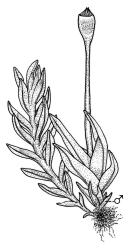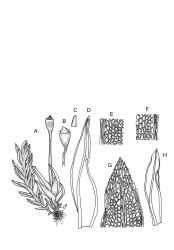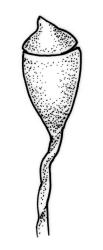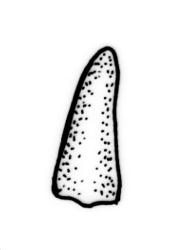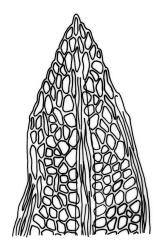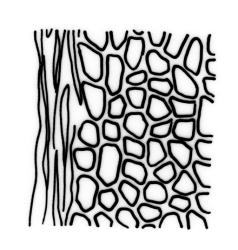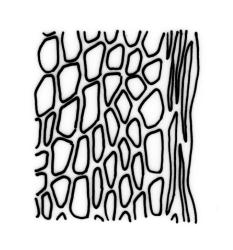Plants to 4 mm, yellow-green, densely gregarious. Stems simple, with rhizoids at base only. Leaves in 8–12 pairs, distant, patent, decurved when moist, lightly twisted when dry, lanceolate, 0.60–0.80 × 0.16–0.18 mm; apex acute; laminae unistratose; vaginant laminae ⅔ leaf length, closed, but with minor lamina often indented near its apex; dorsal lamina with border adhering to costa in proximal region; margins entire; marginal cells on all laminae distinct in 2–4 rows, narrow, thick-walled and prosenchymatous, forming well-defined borders that fail shortly below the leaf apex, and may become red with age; cells of apical and dorsal laminae quadrate to irregularly hexagonal, smooth, non-bulging, thin-walled, (7.5–)9–14(–15) × (6–)7–9(–10) µm. Costa subpercurrent, sometimes becoming red with age, bryoides-type in cross-section.
Autoicous. Perichaetia terminal; perichaetial leaves longer than vegetative. Perigonia bulbiform at base of female shoot. Setae straw-coloured to orange-brown, stiff, 2–3 mm; capsules erect to inclined, slightly asymmetric, 0.50–0.75 mm, short-rectangular; operculum rostellate from a conic base, ½ the length of theca. Peristome bryoides-type; teeth with long columnar ornamentation on margin of adaxial trabeculae below the bifurcation, 48–57 µm wide at base. Calyptra smooth, cucullate. Spores 19–25 µm.
Beever & Stone 1999, fig. 4, a–c, h, j, l–n; Beever et al. 2002, p. 54, figs 1–5; Stone & Catcheside 2012.
The species could be confused with F. curvatus var. curvatus but differs in a number of features: although the leaf border is strong in F. perangustus, it fails below the leaf apex and may cohere to the costa on the dorsal lamina proximally for up to c. ⅓ of the leaf length (in F. curvatus var. curvatus the border often fuses with the costa at the leaf apex and otherwise coheres to the costa only at the leaf base); the beak on the operculum is shorter (rostellate in F. perangustus vs rostrate in F. curvatus var. curvatus); and the spores are larger (19–25 µm in F. perangustus vs 12–16(–21) µm in F. curvatus var. curvatus).
The habitat seems also to differ, with F. perangustus occurring on bark or sandstone in sites that are periodically inundated, whereas F. curvatus var. curvatus is found on mesic soil.
NI: N Auckland.
Australasian. Mainland Australia*.
Fissidens perangustus is presently known in N.Z. from only three localities, all in the N Auckland L.D., and all below 75 m elevation. In the Waitakere Ranges (J.E. Beever 75-10a, CHR 587272) it occurs in indigenous forest on periodically inundated volcanic sandstone in a broad stream bed, in conditions of high light. At Ahipara, a specimen (J.K. Bartlett s.n., AK 187828) with minimal collection details has plants attached to a piece of silted bark, suggesting a substrate subjected to periodic inundation. The third locality is in the Kaihū Valley, where F. perangustus was collected (P.J. de Lange 9318 & A.J. Townsend, AK 319081) "on cabbage tree trunk emerging from water in slowly flowing muddy stream in a kahikatea-kowhai-cabbage tree swamp". All three sites are close to the west coast, and thus putative landfall points for spores blown from the east coast of Australia, where the species also occurs.
Fissidens perangustus is classified as "Data Deficient" in the N.Z. Threat Classification System (Glenny et al. 2011).
An account of F. perangustus in N.Z. was given by Beever & Stone (1999).



